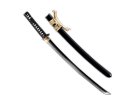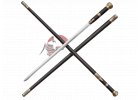Cosmo Jarvis and Hiroyuki Sanada star in the new hit series "Shōgun," which brings to life and brings to life Japan's violent feudal past in all its terrifying glory. There is a scene in the debut episode "Shōgun" that sets the standard for the brutality that follows. After starvation, mutiny, and the captain's suicide aboard a ravaged Dutch merchant ship, pilot John Blackthorne (Cosmo Jarvis) and his surviving crew arrive on the coast of Japan at Anjira, where armed guards throw them into a pit to await their fate. While Blackthorne escapes execution, a member of his entourage is less fortunate – he is bound and placed in a cauldron of water where he is slowly boiled to death. No, this isn't Westeros, despite what rave reviews comparing it to Game of Thrones might suggest. This is Japan in the 1600s - a time of great turmoil after two centuries of civil wars. Here, Blackthorne—inspired by Admiral William Adams, the first Englishman to reach Japan—must adapt to a brutal, alien reality as the weak government of the five regents threatens to disintegrate into warring factions after the death of Taikō (the former imperial regent).His survival depends on an alliance with by Lord Yoshii Toranaga (Hiroyuki Sanada) and Portuguese Catholic missionaries. Originally a world-renowned bestseller (James Clavell's 1975 hit reached 15 million copies by 1990), "Shōgun" has already proven its potential on pay TV. In 1980, the original nine-hour miniseries on NBC—with Richard Chamberlain, John Rhys-Davies, Japanese icon Toshirô Mifune and Orson Welles as narrator—won three Emmys and three Golden Globes after becoming the second most-watched show on American television. Its popularity even contributed to the rise of sushi restaurants in the US during this period. Set in 2024, a new series from Rachel Kondo and Justin Marks brings even more vivid historical context—ultimately delivering a rich depiction of feudal Japan. In the 1600s, world power dynamics were very different from today's world: Protestant England was forced to defend the throne of Elizabeth I against an invasion in 1588 when the Spanish army wanted to restore Catholicism and end English support for Dutch independence from Spain. The second player was a country in dynastic union with Portugal; the two powerful Iberian states had previously divided the oceanic regions outside of Europe between their vast empires with the Treaty of Tordesillas in 1494. Portugal, a pioneer of global exploration, encountered Japan in 1543 – trading for Western goods such as firearms while spreading the Catholic faith through Jesuit missionaries. This context serves as the backdrop for Blackthorn's treacherous voyage in "Shōgun". Thomas D. Conlan, professor of East Asian studies and history at Princeton University and author of "The Samurai and the Martial Culture of Japan, 471–1877: The Sources," explains that the Portuguese (and the Spanish) had two main goals in Japan. The first was to convert Japan to Christianity, and the second was to eventually conquer Japan through the conversion of high-ranking lords to Christianity. However, they had to proceed with caution because the military strength of the Portuguese could not compete with that of the Japanese. This caution was evident as early as 1552, when one of the first Western visitors to Japan noted that the Japanese were very polite to each other but scornful of foreigners. Japan was in the midst of a long and chaotic upheaval at the time – so it seemed that tensions within the Shōgun might erupt. Known as the Sengoku Jidai or "Warring States Period" (roughly 1467-1615), it was an era defined by near-constant civil wars as feudal lords fought for complete control of the land. The goals of three successive warlords—including Toyotomi Hideyoshi, the recently deceased Taikō of Shōgun's narrative, and Tokugawa Ieyasu, his eventual successor—would be achieved by unifying the country in the early 17th century, but not without considerable violence and force from the bushi (samurai) class warriors). A sword-wielding samurai followed a strict moral code that related to the ideals of a cultured warrior. As Danny Chaplin, author of Sengoku Jidai. Nobunaga, Hideyoshi, and Ieyasu: Three Unifiers of Japan explains that their beliefs came from several religious traditions: "From Buddhism, the samurai learned that death was only an illusion, so they were not afraid to die. From Shinto, the samurai learned to honor his ancestors, which he it imparted a deep sense of loyalty and continuity. From Confucianism he learned the basics of how to behave toward others in a strictly hierarchical society."

_-_edited.png)































